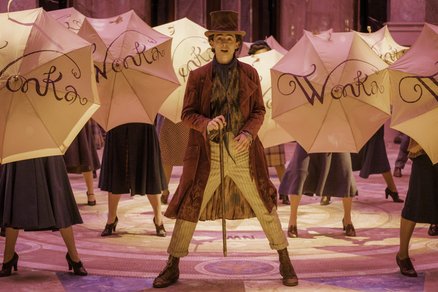mild threat, violence, implied bad language
A young chocolatier with dreams of opening his own shop arrives in a city famous for its sweets, only to clash with the established business cartel controlling the market through underhand means. Inspired by the works of Roald Dahl and 1971’s Willy Wonka And The Chocolate Factory, this playful fantasy prequel stars Timothée Chalamet as the eponymous Willy Wonka.
Key classification issue: violence
Despite his gentle nature and good intentions, in one scene Wonka is accosted by the Chief of Police who has been ordered by the cartel to intimidate him. The policeman does so by dunking Wonka’s head repeatedly into a nearby fountain, and he is seen briefly struggling to breathe with his head under the water. As Wonka regains his composure, it is implied the policeman hits him over the head with a truncheon.
Despite the violent acts, the intensity of the scene is lessened by its humour. The policeman comes across as comically inept, at first delivering the verbal warning while Wonka’s head is underwater, meaning he cannot hear. The policeman apologises for his actions, and then threatens that if Wonka continues to sell chocolate in the town he’ll get “more than a bonk on the head”, before releasing that he was supposed to say that after hitting Wonka on the head. He asks for Wonka to wait, and our hero politely obliges while the policeman draws his truncheon and swings it towards Wonka. The scene cuts before the weapon makes contact, leaving the audience to imagine the blow rather than showing it.
The comic intent of the scene mitigates the strength of the violence we see, because it is clearly played for laughs and without clear malice on the part of the attacker. However, dunking someone’s head underwater can be dangerous and the scene is nonetheless too detailed to be containable at U. However, the context and presentation means that we were able to classify it PG for mild threat, violence, implied bad language.


